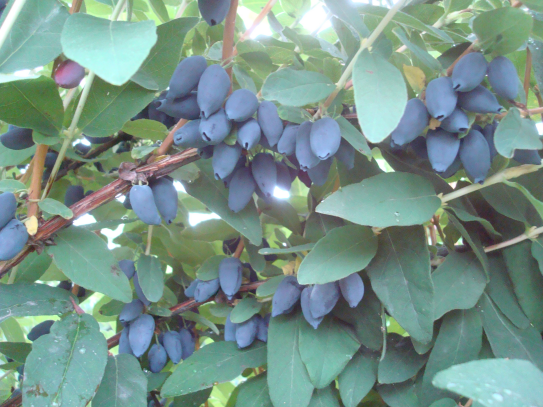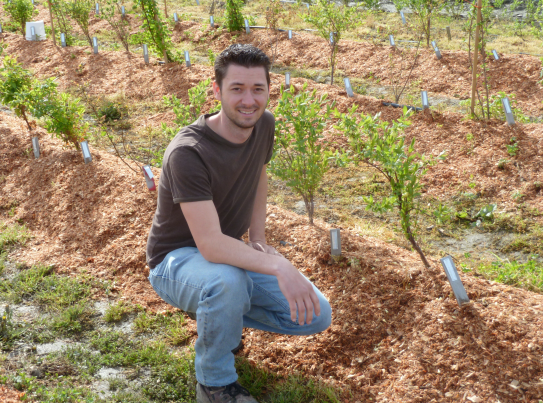By Katherine Gibson (Contributor) – Email
Print Edition: July 17, 2013
Lonicera caerulea, Haskap, or the blue honeysuckle. If you are thoroughly confused and have no idea what these names refer to, you are probably not alone.
The blue honeysuckle, otherwise known by its Latin and Japanese names respectively, is a new breed of plant being researched at UFV primarily by Eric Gerbrandt, a PhD student in the University of Saskatchewan’s Plant Science Department.
As Gerbrandt explains, this plant reflects attributes that many people are familiar with.
“The blue honeysuckle is a species of the honeysuckle plant, like the garden variety ornamental honeysuckles that have nice-smelling flowers,” he says. “This is just another species within the same plant family, with the addition of edible blue berries.”
As a crop, the blue honeysuckle has been developed over the last 50 years – primarily by the Russians and by the Japanese. However, this is the first time a heightened level of this plant’s genetic diversity has been brought to Canada’s west coast.
In addition to learning how each variation of this plant adapts to the west coast’s unique climate, the fruit quality and the characteristics that would make this crop effective for farmers to cultivate, Gerbrandt acknowledges that it is the potential antioxidant value of the plant’s berries that has many people excited.
“There is some science behind the antioxidant theory of extending one’s life, preventing cancer and reducing various types of diseases,” he continues, “and these berries are very high in antioxidants.”
Even though you won’t be seeing blue honeysuckle berries in your local supermarket any time soon, the potential for this crop to influence the market is there.
“Although I think it will be a while before everybody knows about this plant,” Gerbrandt continues, “you will probably start to see this product being sold in niche markets, [at least initially], as people start growing it.”
“The blue honeysuckle is a crop with a lot of potential and with continued diligent work we are going to see a new and interesting crop come into the public eye,” Gerbrandt concludes, “and UFV being involved with that work is an exciting thing.”




